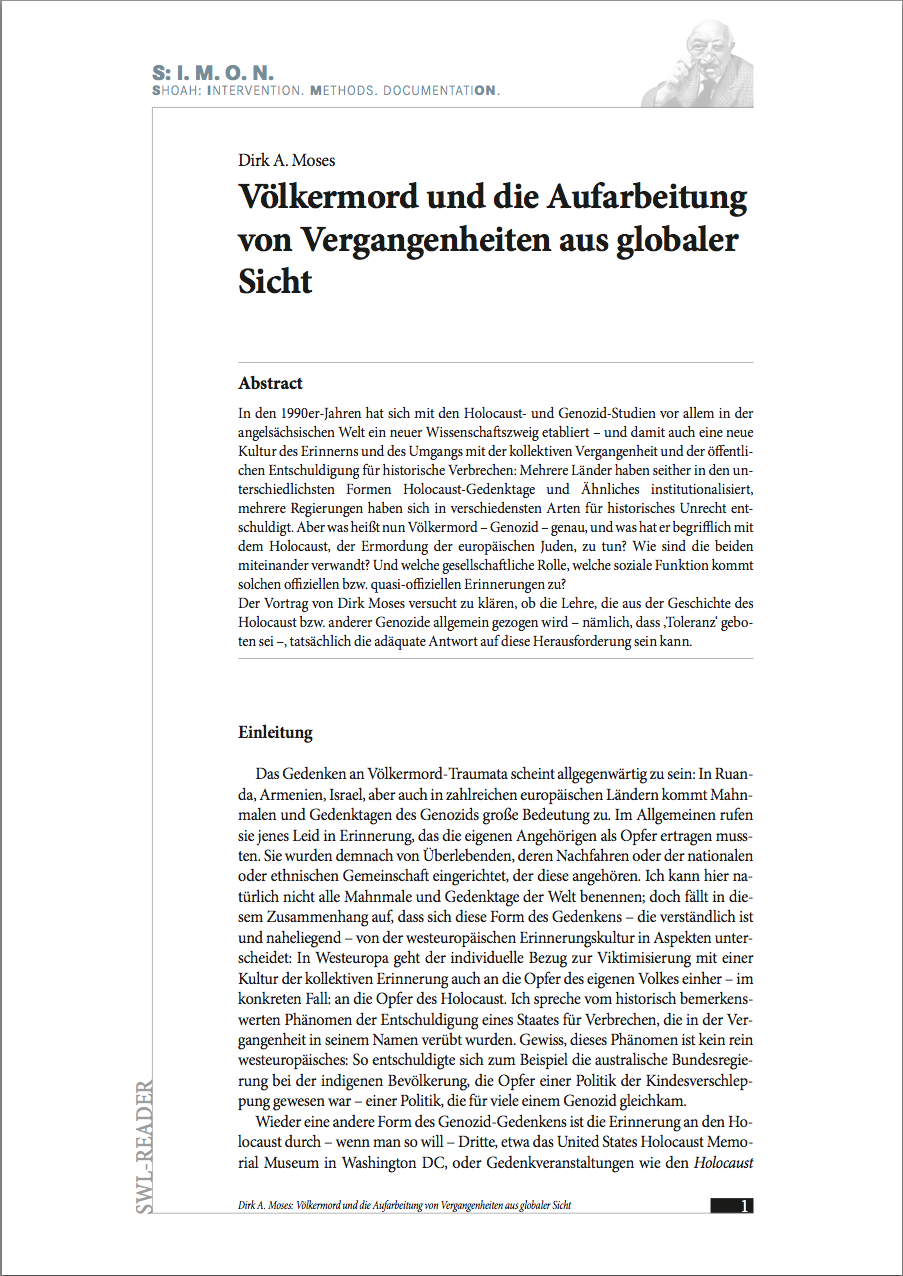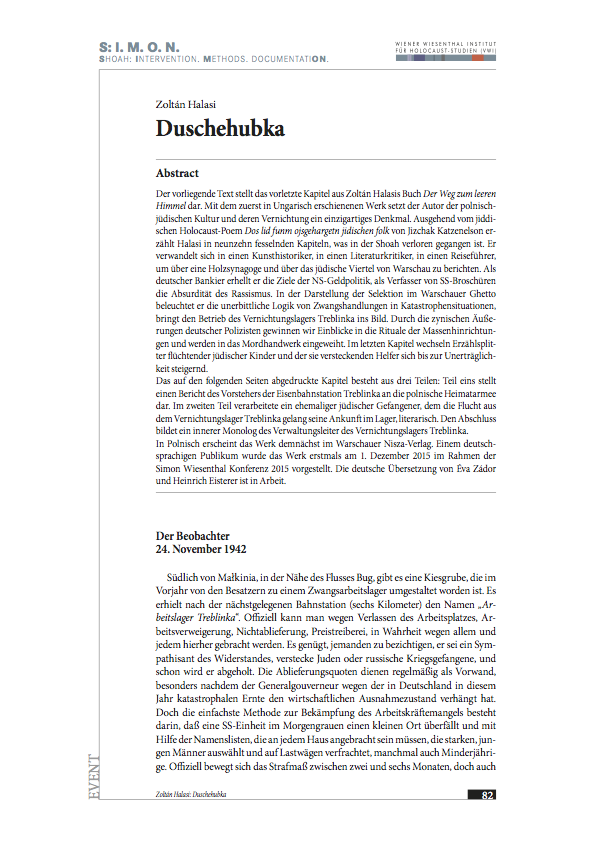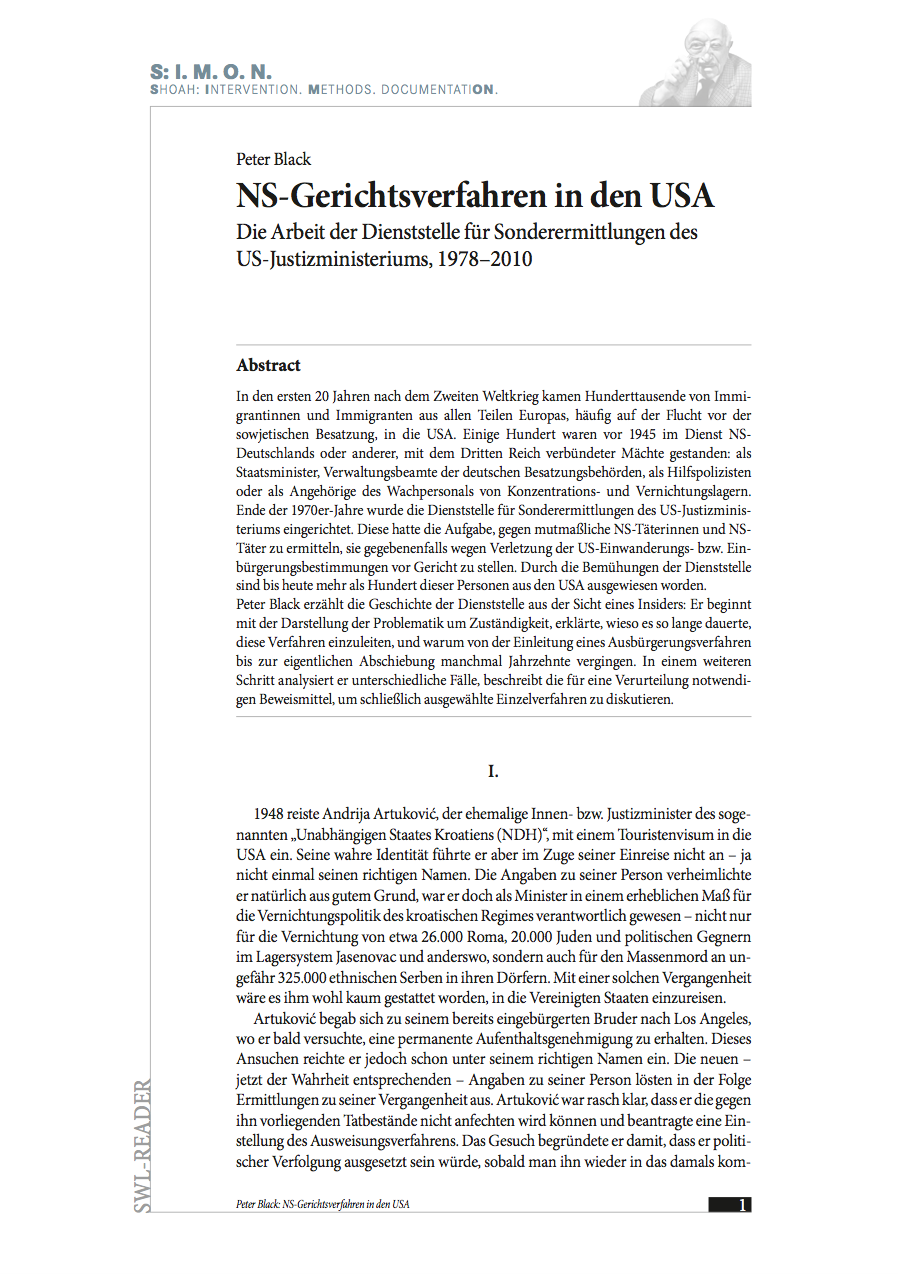During the first two decades following the Second World War, hundreds of thousands of migrants arrived in the United States of America from all parts of Europe, many of them having fled the Soviet occupation. Several hundred had been in service to Nazi Germany or other powers in league with the Third Reich before 1945: as state ministers, administrative officers of the German occupational forces, adjunct policemen or as guards at the concentration camps and extermination camps. In the late 1970s, the US Department of Justice established an Office for Special Investigations. It was their task to investigate alleged Nazi perpetrators, and, if applicable, to prosecute them for violation of the US immigration and naturalization laws. Their efforts resulted in the deportation from the United States of America of more than a hundred of these persons.
Peter Black recounted the story of this office from an insider's point of view. Beginning with an explanation of the problem of competence, he explained why it took so long for these cases to be initiated, and how it was possible that decades passed between the initiation of a deportation case and the actual deportation. He then went on to analyse a range of cases, described the required evidence and finally presented a discussion of selected individual cases.











